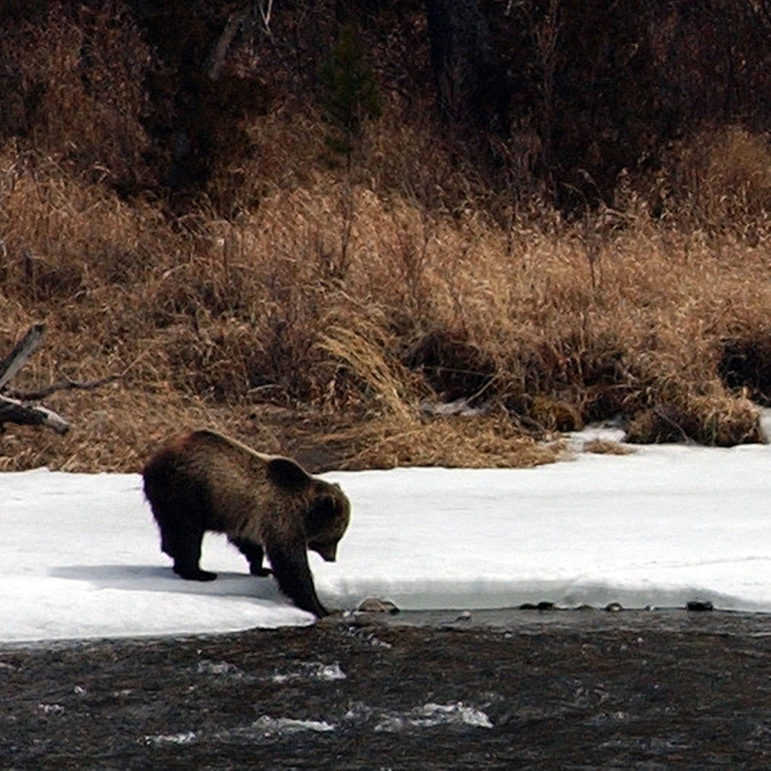
A grizzly bear tests the waters along the banks of the North Fork of the Shoshone River, just east of Yellowstone National Park.
It’s time for outdoorsmen in the greater Yellowstone area to once again exercise bear safety as bears begin emerging from hibernation.
In the first confirmed report of grizzly bear activity this year in Yellowstone National Park, guides and visitors on March 4 observed and photographed a bear along the road in the Mud Volcano area of Hayden Valley, north of Yellowstone Lake. The first black bear of the year was spotted Feb. 11 near the southern end of the park.
“There have been no additional grizzly bear sightings reported since Tuesday, but roads are beginning to close for plowing, so there are fewer people out there to see bears,” Yellowstone bear management biologist Kerry Gunther said Friday.
Park officials say this is about the normal time when grizzlies typically emerge from hibernation. News of the first grizzly sighting was released on March 14 last year and March 12 the prior year.
Gunther said Yellowstone has had above-average snow this year and that generally leads to higher numbers of winter-killed elk and bison.
“That’s a good spring food for bears, so we expect to see more bears on carcasses this spring,” Gunther said.
Bears begin looking for food soon after they emerge from their dens, and because carcasses are such an important food source, they will sometimes react aggressively when surprised while feeding on them.
With the emergence of bears, park officials are advising hikers, skiers and snowshoers to stay in groups of three of more, make noise on the trail and carry bear spray.
Yellowstone’s website advises visitors to learn about bears before they come to the park, with sections on reducing the risk of a bear encounter, reacting to a bear encounter, understanding the bear’s mindset, and the use of bear spray. Updated information is available online.
Bear safety information is also available in the park newspaper, distributed at all park entrances, while information on seasonal bear management area closures, designed to reduce encounters in areas with many elk and bison carcasses, can also be found online.
Yellowstone regulations require visitors to stay 100 yards from black bears and grizzly bears at all times. The best defense is to stay a safe distance from bears and use binoculars, a telescope or telephoto lens to get a closer look.
Park officials advice that visitors traveling away from developed areas should stay in groups of three or more, make noise on the trail, keep an eye out for bears and carry bear spray. Bear spray has proven to be a good last line of defense, bear experts say, if kept handy and used according to directions when a bear is approaching within 30-60 feet.
Visitors are also reminded to keep food, garbage, barbecue grills and other attractants stored in hard-sided vehicles or bear-proof food storage boxes. This helps keep bears from becoming conditioned to human foods, and helps keep park visitors and their property safe.
Bear sightings should be reported to the nearest visitor center or ranger station as soon as possible.

Bears should have more carcasses to feed on from bison being killed by the park or are they disposed of elsewhere?